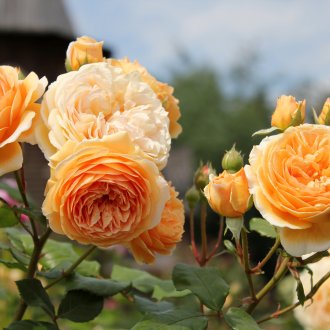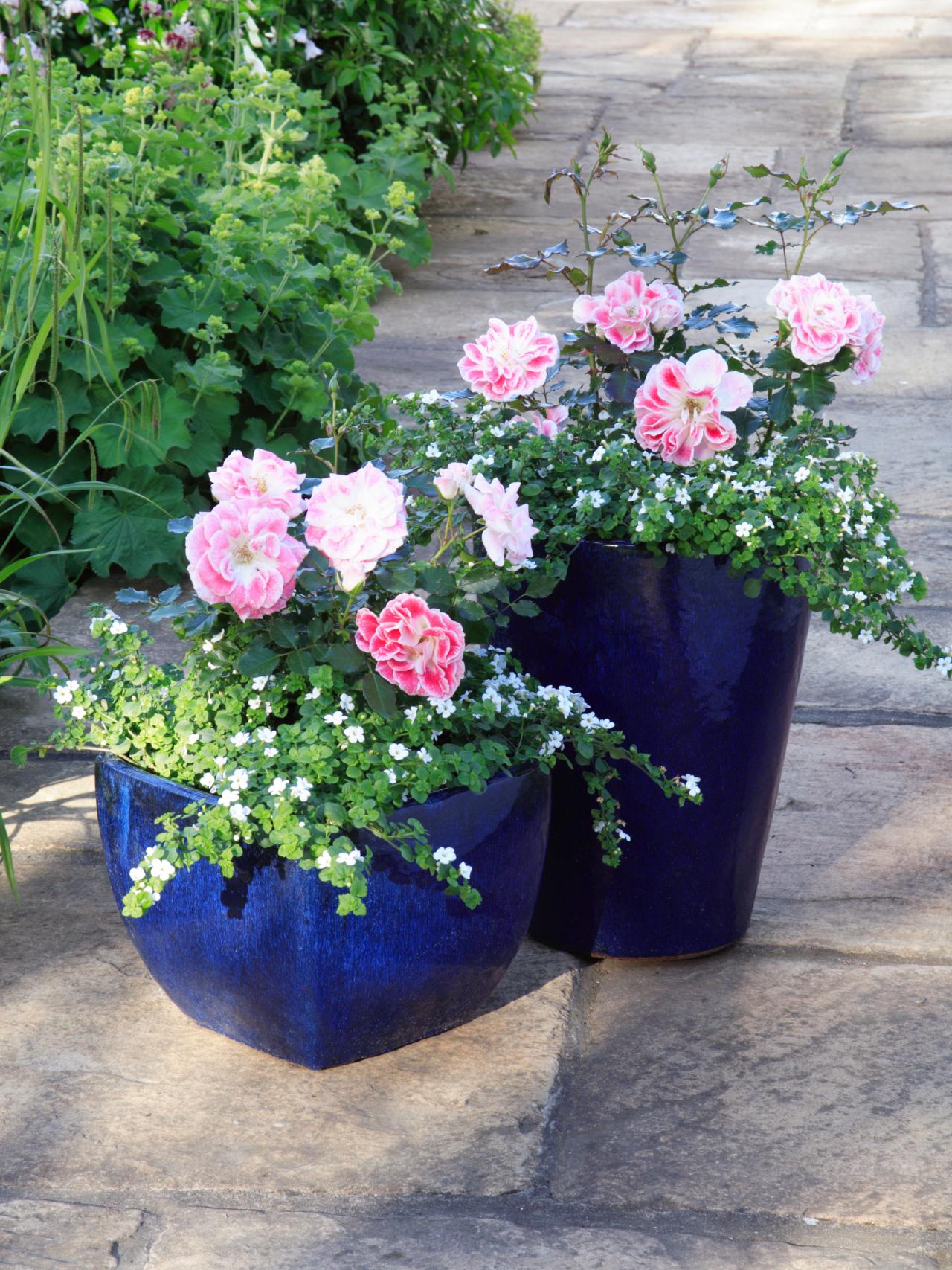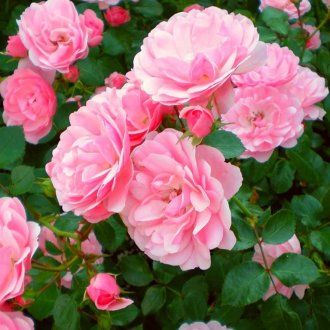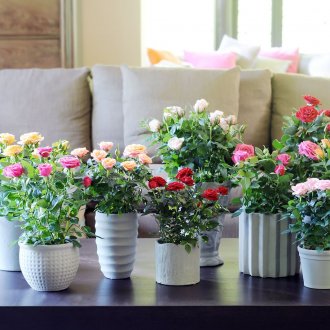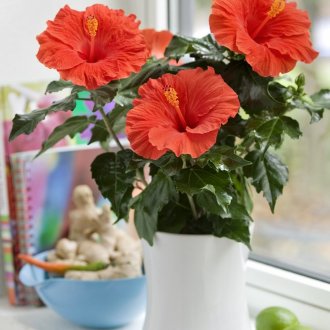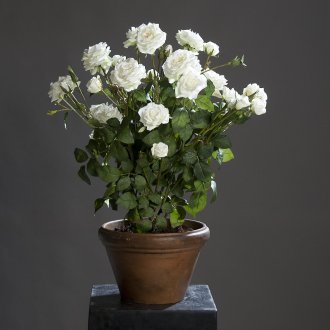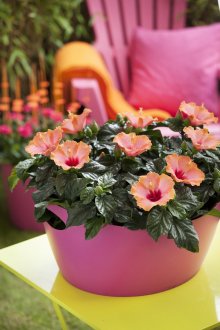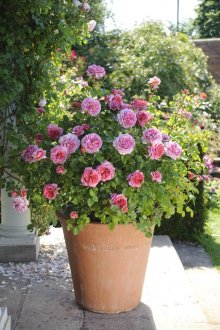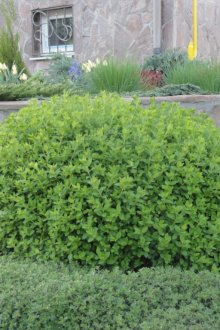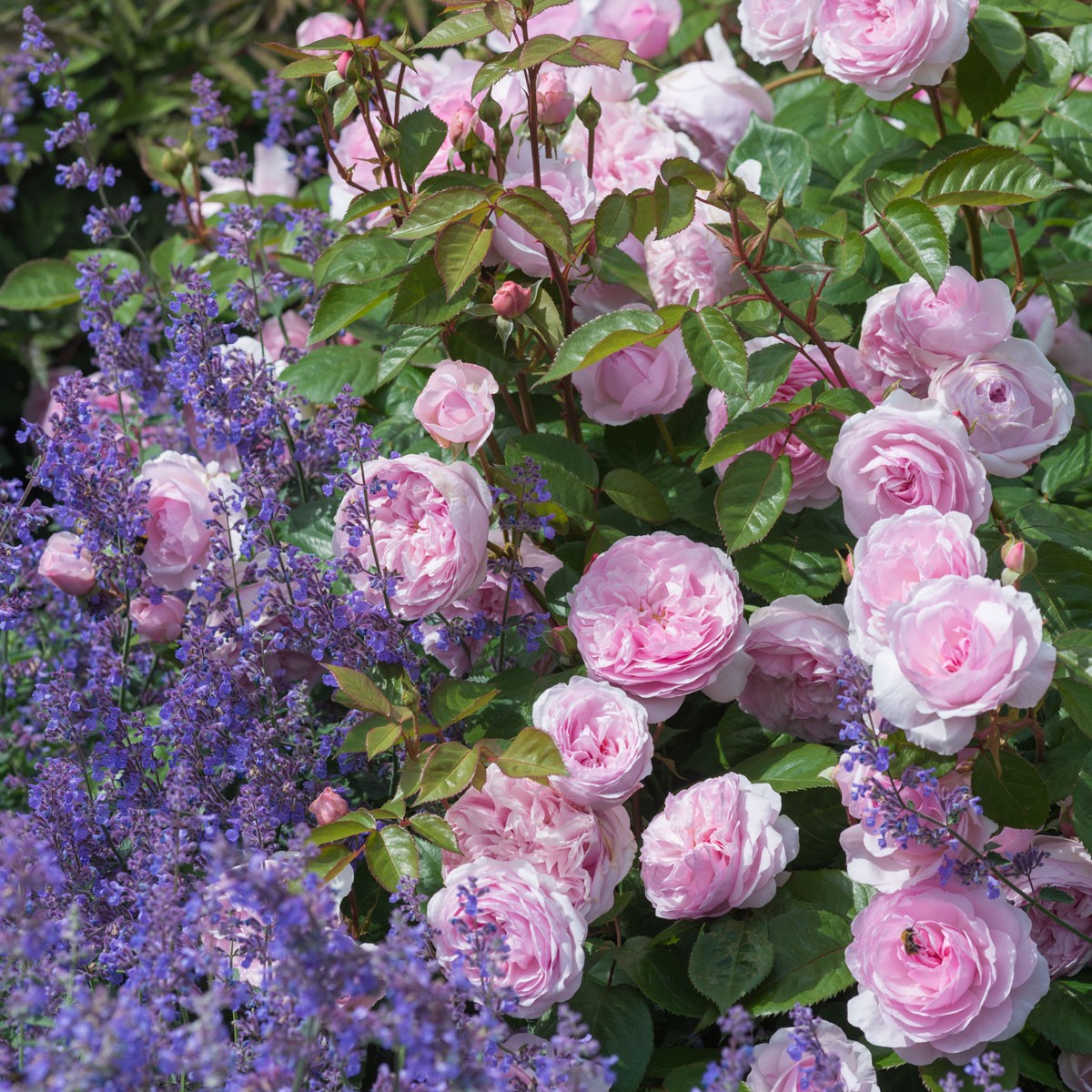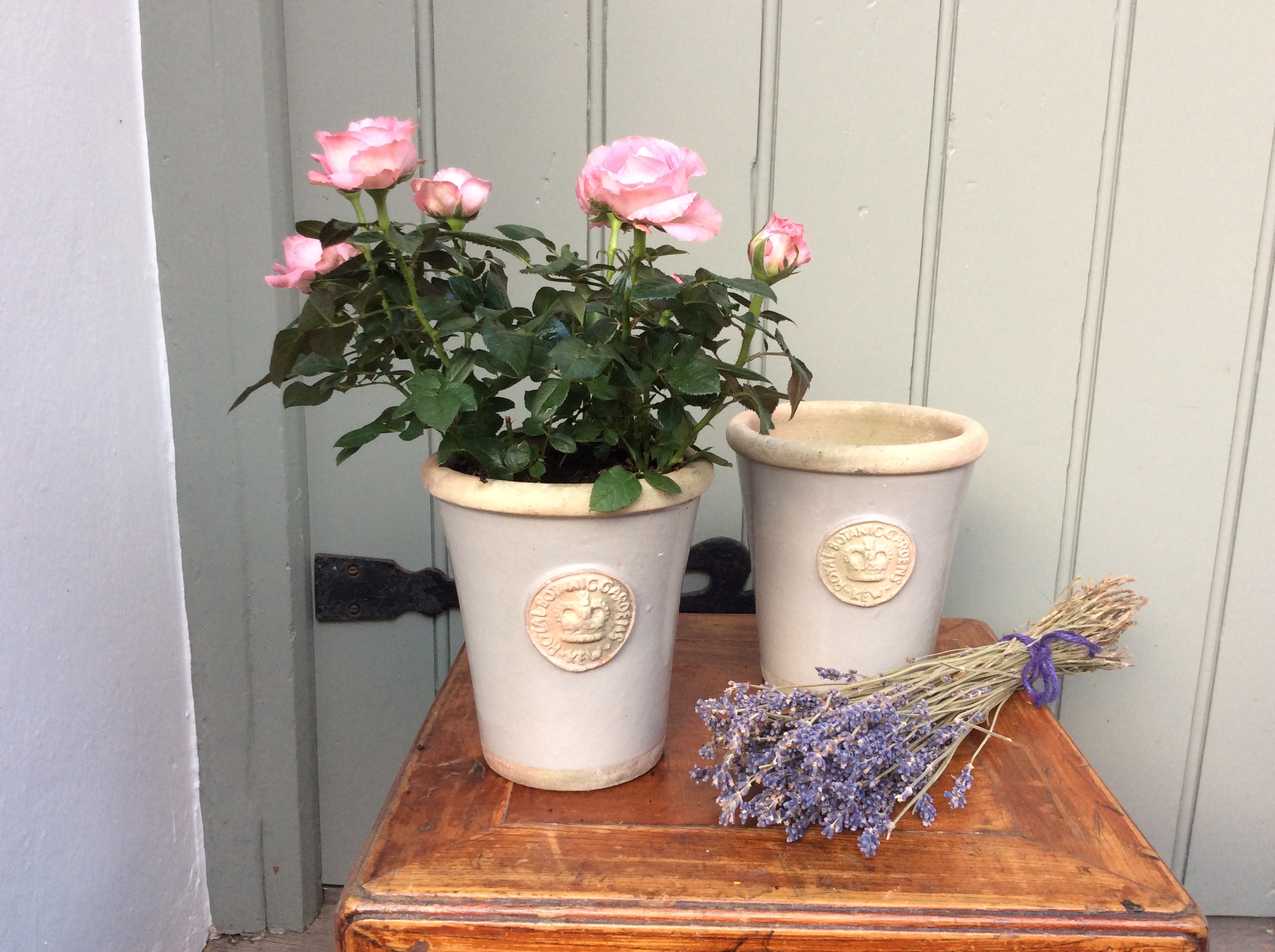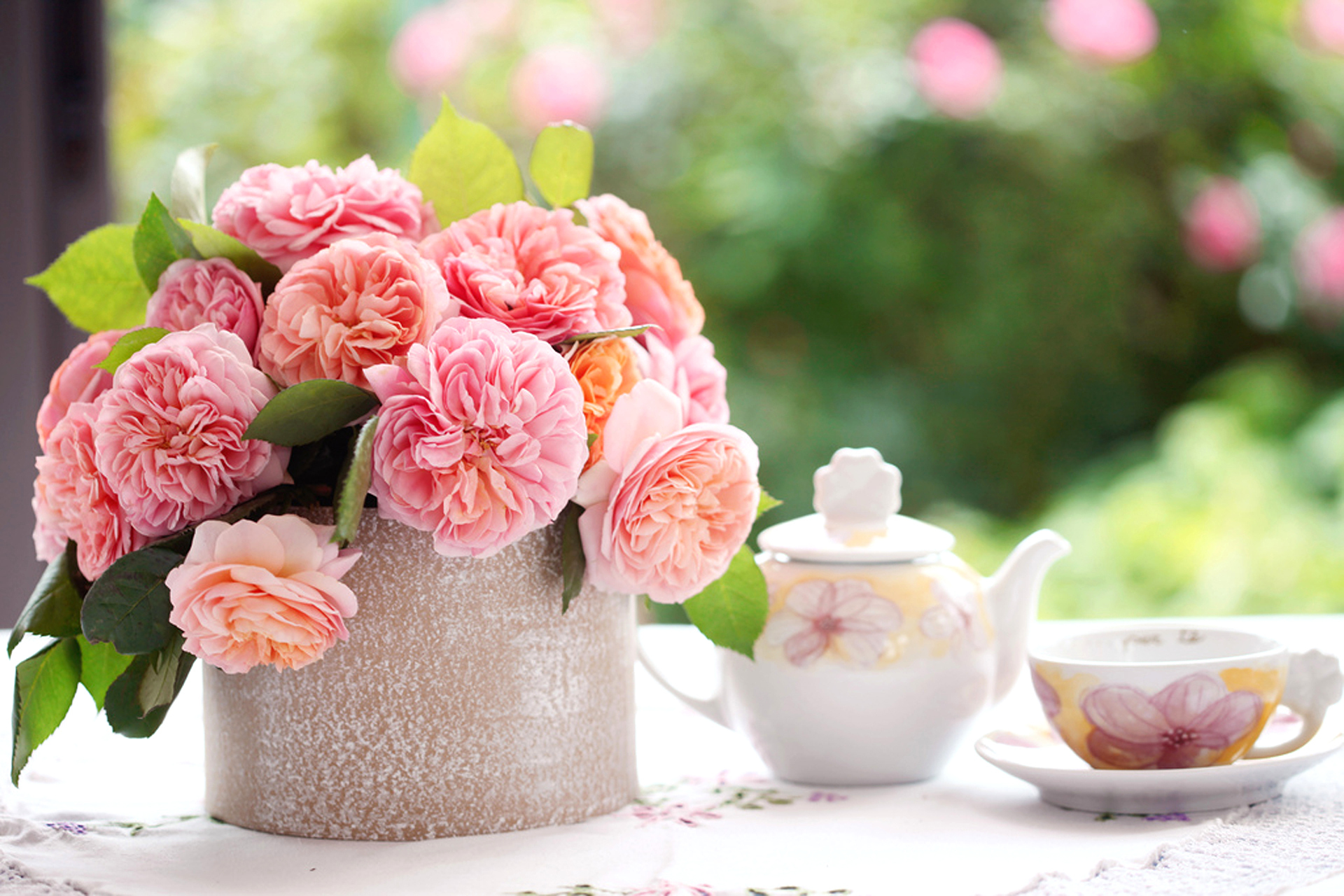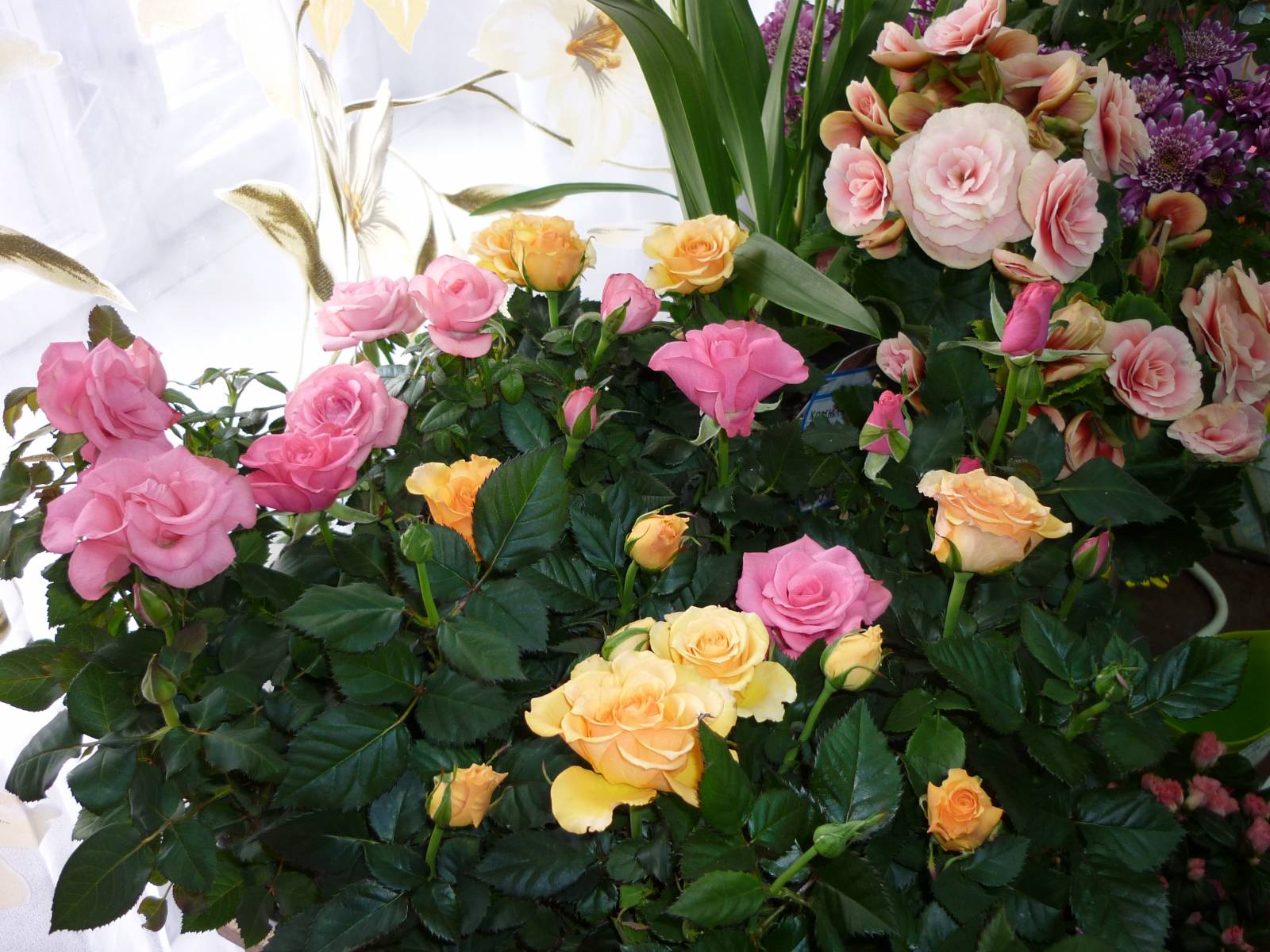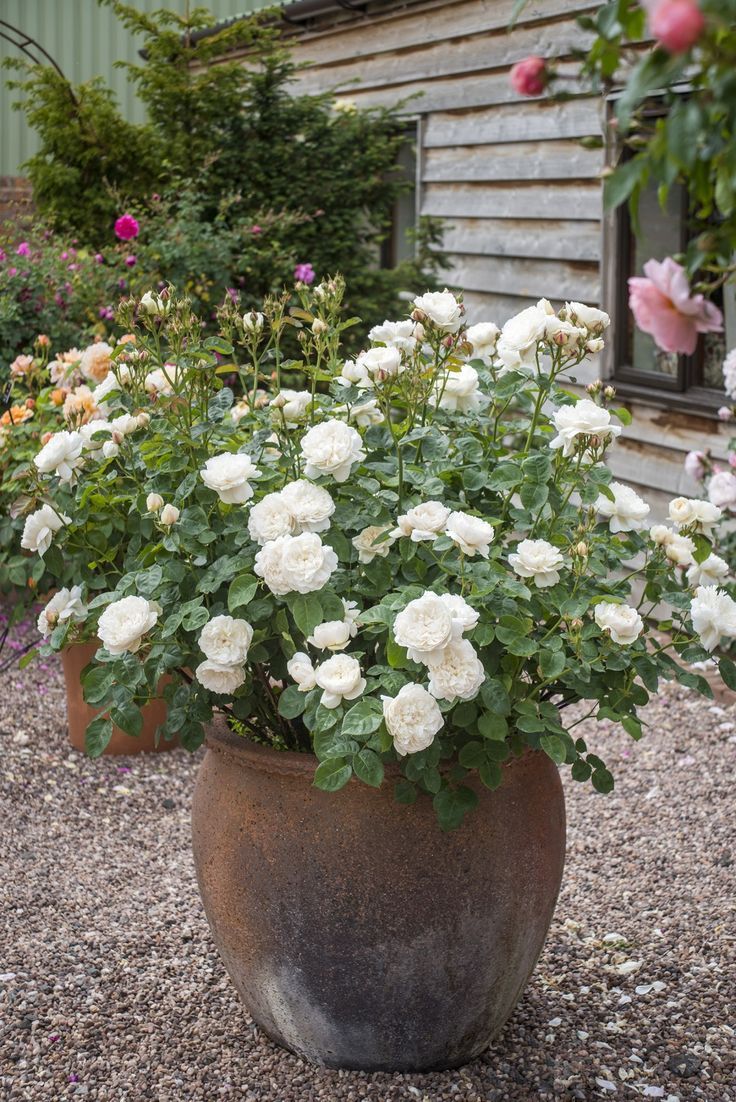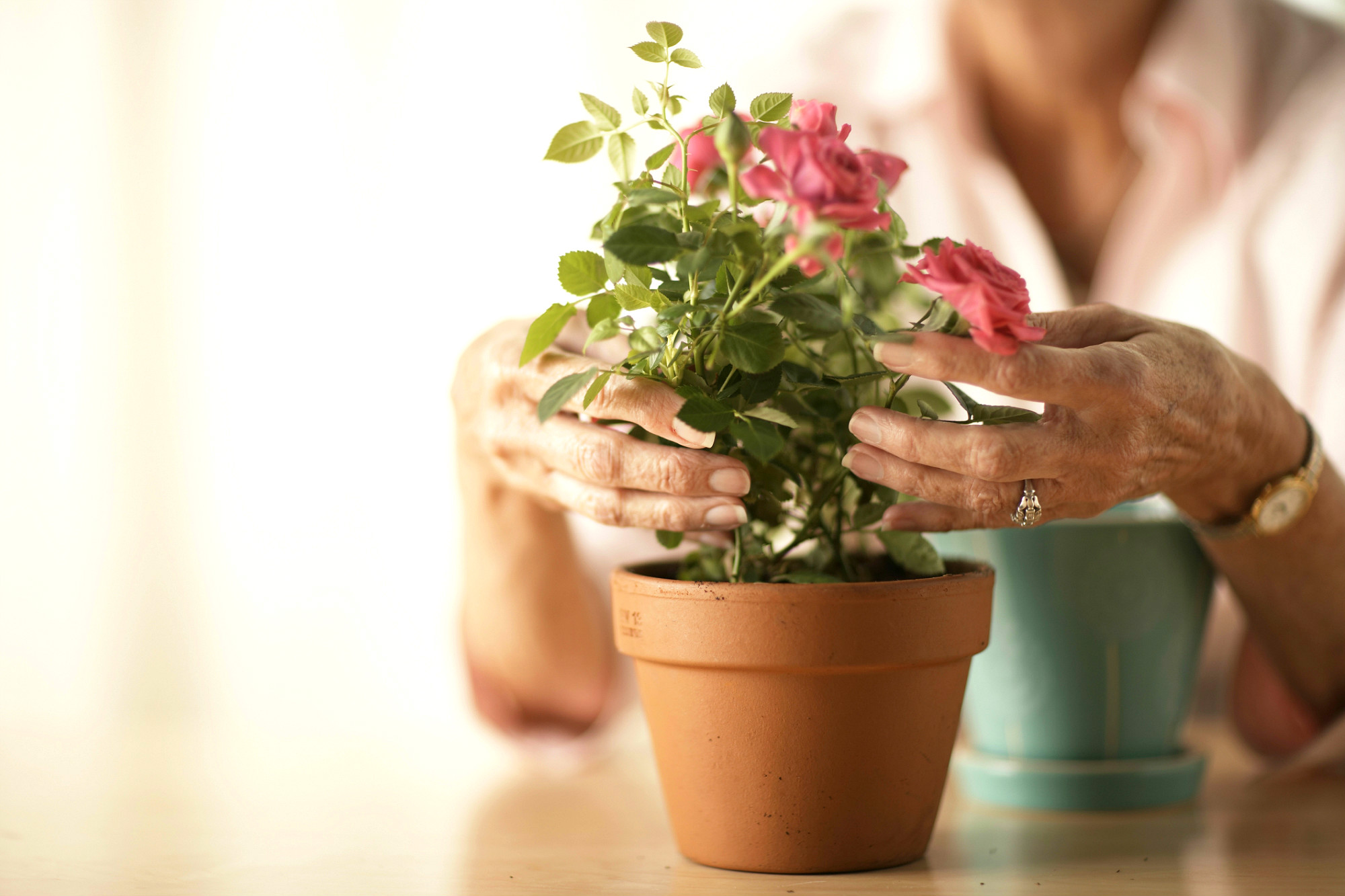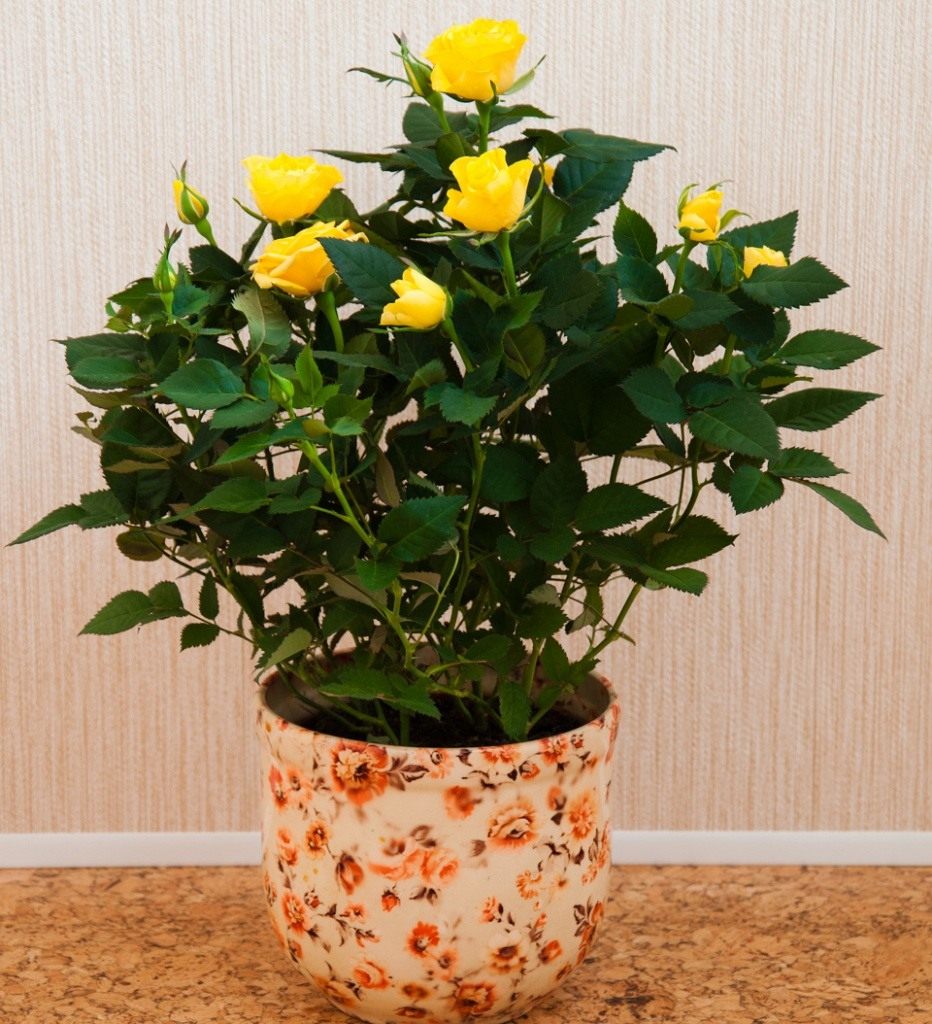Indoor rose - graceful beauty with delicate petals (21 photos)
Content
Indoor rose - a flower of miniature forms from the Rosaceae family - adorns the windowsills of many gardeners and is noteworthy for the beauty of graceful foliage and abundant flowering almost all year round.
The height of dwarf bushes usually reaches 18-25 cm, mini-roses of 45-50 cm are also found.The plant stands out with a capricious disposition, but with proper agricultural technology it is not difficult to keep a green pet in a decent form, and a room rose will delight others with luxurious flowering.
Growing Features
The main requirements for growing a compact pink bush in a pot are as follows:
- the plant develops well in a sunny place, place it on a windowsill on the south or southeast side of the room;
- water and feed the pet in a timely manner according to the requirements of the variety's agricultural technology;
- perform regular pruning and transplanting, this affects the flowering intensity, improves the decorative qualities of the seedling;
- provide protection against diseases and pests.
In fact, caring for a room rose is simple, knowing the agricultural technology of the culture, it is easy not only to maintain it, but also to propagate it by the cuttings method.
Brief characteristics of the varieties
The following varieties of indoor roses are most common:
- Baby Darling with orange-pink inflorescences;
- Starina with fragrant crimson flower petals;
- Judi Fischer with double pink flowers;
- New Penny with coppery pink inflorescences;
- Cinderella with silver pink flowers.
Among the low varieties of other varieties, the following are especially popular:
- Bengal red - valued for the duration of the flowering period, which often stretches before the New Year holidays. It is considered the most suitable variety for keeping indoors. It has evergreen leaves, semi-double flowers of medium size in color from bright red to dark red. The plant does not need pruning, as it grows low, it grows well. If pruned, the seedling may die.
- Chinese rose - stands out for its smallest size among relatives, grows to a height of only 15 cm, flower diameter - 2 cm. Due to the splendor and abundance of inflorescences, the bush looks very spectacular. Most representatives of this variety need wintering under cold conditions. There are varieties of Chinese roses with a strong fragrance and odorless, with the color of the petals of red, yellow and silver shades.
- Tea rooms are characterized by a long flowering period. Lush bushes up to 30 cm tall with large leaves, strongly double flowers of different shades with the aroma of tea. On the stems of some species and on the back of the leaves there are thorns. The plant reacts poorly to dampness and cold, winters in cool.
- Bourbon - the plant reaches a height of up to 0.5 meters, the flowers are large, last a long time. It blooms from the beginning of summer until the New Year, then the rest period begins. In March, almost all foliage falls, but the bush quickly overgrows with young greenery.
- Repairing - with proper care, can bloom all year round. The bushes are relatively large in size with rare but large inflorescences of a red palette, white and pink shades.The variety is unpretentious in care.
- Polyanthus - highly branched multi-flowered bushes up to 50 cm high. Inflorescences of pink, red and white shades with a noticeable aroma. Ideal for growing indoors, with proper agricultural technology they bloom from March to December, they easily tolerate wintering on a cool windowsill.
Knowing the characteristics of mini-roses of different varieties, it is easy to choose a houseplant with the desired properties.
Chinese rose - hibiscus
In the natural habitat, it is a sprawling evergreen shrub up to 6 meters high. For growing indoors, use dwarf varieties of Chinese roses up to 40 cm in height.
Hibiscus flowers bloom only for a day, attracting attention with double, semi-double or funnel-shaped inflorescences of bright red color or white, purple, variegated, lilac and salmon shades. The flowering period of Chinese roses is from March to November. The flower is extremely loyal to the conditions of detention, but grows especially well with sufficient lighting and proper watering.
How to care for a room rose?
In order for the rose bush to fully develop in room conditions and please lush flowering for a long time, proper care is necessary.
Watering
In summer, the plant is watered often, focusing on the state of the upper soil layer. Do not breed moisture in the pot, maintain an optimum level of humidity of both soil and air. To eliminate the risk of rotting of the root system, regularly check the sump and drain the accumulated water. Sprinkling is a useful procedure for vegetation and flowering of a room rose, especially in hot and dry weather. A green pet is arranged for showers every other day in the evening, using warm water, which they defend in advance. With the onset of the cool season, watering reduces, and the intensity of sprinkling is reduced. In winter, during dormancy, the substrate is occasionally moistened to maintain the root system.
Top dressing
When choosing a fertilizer for indoor roses, remember that during the budding period it is necessary to feed the plant with nitrogen compounds. Phosphorus-potassium substances contribute to the flowering period. In spring and summer, when the bush is actively developing, they are fed with an interval of 14 days. Before applying fertilizer, it is necessary to water abundantly to eliminate the risk of root burns. For best results, it is recommended to alternate top dressing with the use of mineral and organic compounds, this will provide mass flowering, affect the intensity of color and aroma. As the fall season approaches, the interval in the fertilizer schedule is gradually increasing.
Pruning
At the end of the flowering period, you need to trim the indoor rose. At the same time, the stems are shortened, leaving 5 buds on the shoots. At the same time, hygienic pruning is carried out - weak and dead branches are removed. The procedure can be performed in the spring after waking up, if you did not have time before wintering. Without pruning, the flower stretches, loses its compactness, and the duration and intensity of flowering decreases.
Transplanting a room rose
A rose in a pot, bought in a store, needs a period of adaptation to new conditions, so it is transplanted only 2-3 weeks after acquisition. The fragile root system of the pink bush negatively reacts to any external influences. This applies not only to young plants, but also to adults, so a transplant of a room rose is performed using transhipment:
- the bush is watered abundantly to make it easier to take it out of the pot;
- meanwhile, a soil mixture is prepared from humus, turf and sand, or a ready-made substrate is used from a specialized store;
- a drainage layer of expanded clay, broken ceramics or pebbles is placed at the bottom of the new pot, a small layer of soil is added;
- they take the plant out of its former capacity without destroying the lump of earth, and install it in a new pot;
- sprinkled with soil, slightly compacted, sprayed foliage with warm water.
Next, the transplanted plant is left in partial shade for several days, then placed in a permanent place.
Pest and Disease Control
If small dots of a reddish-brown hue are noticed on the foliage and stems, this means that a spider mite has appeared, it inhibits the plant. In this case, the flower quickly weakens, the leaves turn yellow and fall off. This pest is caused by dry indoor air. To save a room rose from the attack of a spider mite, insecticides such as Fitoverm, Actellik or Neoron are used. For prevention, it is recommended that green pets take a warm shower, more often spray with water, especially if the room is warm and low humidity.
If dark growths appeared on the stems and leaves of the rose bush, this indicates the presence of a scab, another pest. To solve the problem, it is necessary to remove all the guards from the plant, since saving the flower in a different way will not work. The fact is that the insect protects the shield, against which chemistry is powerless. Next, a room rose is treated using the Actellic solution. Other well-known aggressors are whiteflies and aphids, against which the “Aktara” and “Fitoverm” drugs are effective.
With improper care, a room rose at home is affected by fungal diseases, most often - powdery mildew. This is facilitated by a decrease in ambient temperature and a high level of soil and air humidity. In this case, the leaves covered with a whitish bloom on the rose turn yellow and fall. For the treatment of a pet, it is necessary to remove the affected parts, treat the bush with a solution of copper sulfate or other fungicides.
Rust is the next most common fungal disease that affects miniature indoor roses. Sick plants with reddish-brown spots on the leaf plate are strongly lagging behind in development, almost do not bloom. At the first signs of an ailment, fungicides are treated, treated with Bordeaux liquid, copper chloride or iron sulfate.
With insufficient nutrition during the growing season and flowering, the rose in the pot is greatly depleted. Chlorosis - green veins with yellowness on the leaves - occurs with a lack of iron. Here, for the treatment of a seedling, iron chelate spraying should be carried out. With a nitrogen deficiency, the foliage turns pale, then turns yellow and falls off. The problem is solved by feeding nitrogenous substances.
It should be borne in mind that regardless of its size, the pink bush in the pot grows well away from other green neighbors, because it loves the freedom of space.
